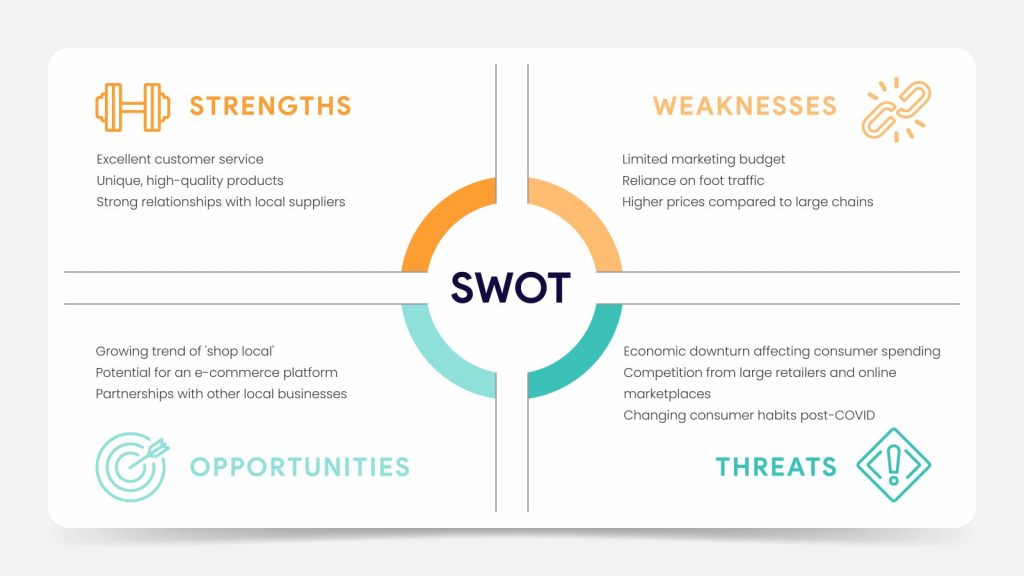Navigating the complexities of running a business requires deep understanding and strategic planning. One of the most effective tools is the SWOT analysis. This classic tool provides a comprehensive snapshot of your organisation’s standing in the market by highlighting its strengths, weaknesses, opportunities, and threats.
What is a SWOT Analysis?
SWOT analysis is an evaluative framework that enables a business to analyse its internal and external environment. The acronym stands for Strengths, Weaknesses (internal factors), Opportunities, and Threats (external factors). It’s a powerful tool that helps identify the positive forces that work together and potential pitfalls that must be overcome or mitigated.
Why Should Businesses Use a SWOT Analysis?
- Identifying Strengths and Weaknesses: By identifying their strengths, businesses can leverage them to gain a competitive advantage. Recognising weaknesses allows companies to take corrective action in areas where they may be vulnerable.
- Spotting Opportunities and Threats: A SWOT analysis can illuminate opportunities for growth—new markets, trends, or technologies—that might otherwise go unnoticed. It also helps identify external threats, such as new competitors or regulatory changes, enabling businesses to plan accordingly.
- Informing Decision-Making: The insights from a SWOT analysis can guide strategic decisions about product development, market expansion, partnerships, or even exiting specific markets.
- Uncovering Competitive Advantage: By comparing your SWOT analysis with your competitors, you can identify your unique selling proposition (USP) and build on it.











